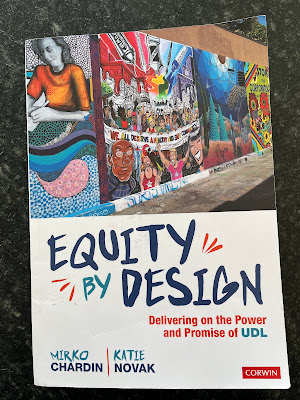Street Data: Empathy Interviews
"Student voices are incontrovertible. We can't dismiss, deny, quantify, or rationalize away the voices and experiences of children at the margins. Allow them to be truthtellers and moral compasses for what you say you believe about equity, but learn to listen deeply without boomeranging into past practice. By choosing the margins as the starting point for our data conversations—those quiet places where the hopes, dreams, and stories of our most disenfranchised students and families live—we invert the pyramid, shift the dynamics of power, and bring children to the center of educational discourse" (Safir and Dugan, 2021, p. 52).
When discussing street data at inservice last week, we touched on the concept of an empathy interview as a method of gathering qualitative data about student experience. There are several aspects of an empathy interview that distinguish it from day-to-day informal conversations with students or interviews that might take place within the context of a probe into an academic concern (e.g., a sit-down with a student about why they did not follow the instructions for an assignment) or a punishment (e.g., an interview with a student in detention about why they engaged in a particular behavior). Let’s briefly discuss some of the distinctive characteristics of empathy interviews:
Empathy interviews are intentional. Every empathy interview does not have to have identical questions; We want students to feel like we’re talking specifically to them. The time should be focused on the student, so conduct the interview at a time where interruptions are less likely to occur.
Empathy interviews are not solutions-focused. The goal of an empathy interview is to better understand a student, to see the school-day and the world through their eyes, and to establish rapport. We want students to feel safe and heard, not that we are trying to “fix” them.
Empathy interviews require active listening. Active listening is a skill. It requires focus and intention to engage in active listening, and it’s unlikely anyone has the stamina to be an active listener 24/7. We have to consciously “activate active-listening mode” when conducting empathy interviews.
Choose a student “at the margin” to interview. The authors of Street Data urge us to gather data with our most vulnerable students in mind. Because we want to build inclusive schools, the priority for collecting street data is to hear the voices of students who are most likely to be or feel excluded from classroom communities.
Empathy interviews are about student voice and school transformation. While being solutions-focused is a mindset we want to avoid during the interview, the data gathered is still actionable. After conducting multiple interviews and analyzing the data with collaborative teams, we should strive to transform our practices and systems based on that data. If we don’t allow ourselves to be transformed by the data, we aren't really listening to student voices.
Examples of Empathy Interviews
- Example Empathy Interview (video from Jamila Dugan, coauthor of Street Data)
- Example Empathy Interview (transcript from Citybridge)
Resources:

Comments
Post a Comment